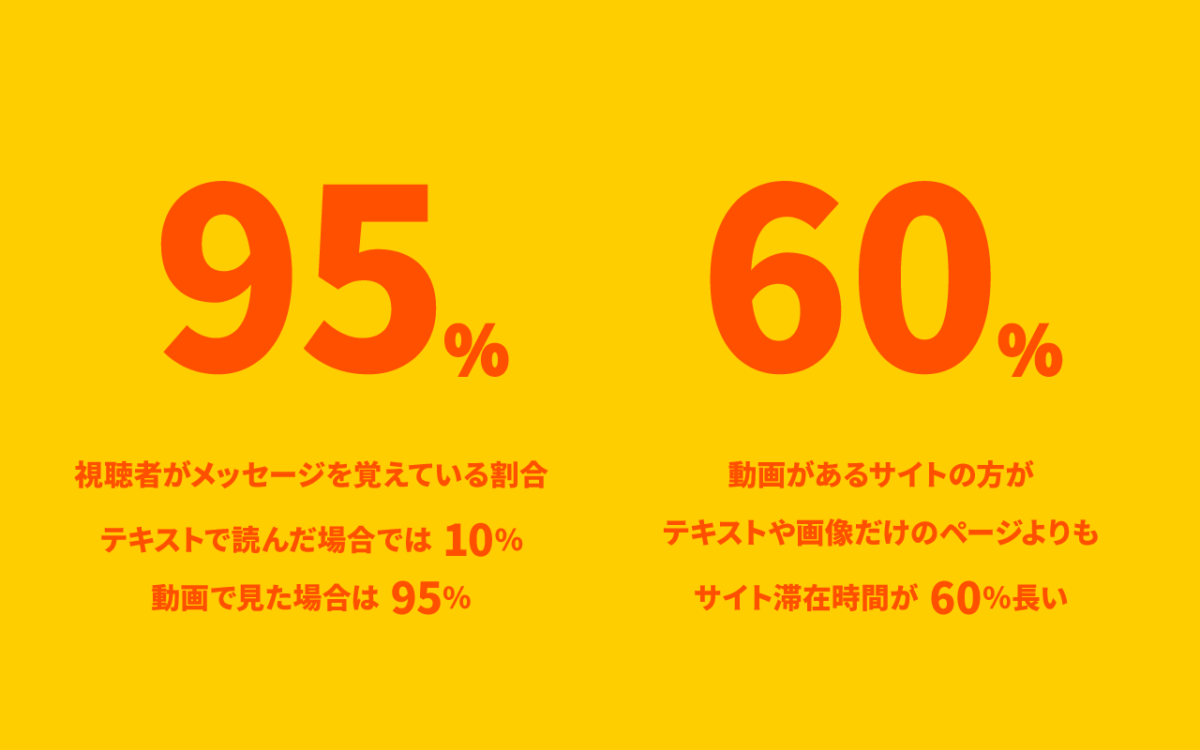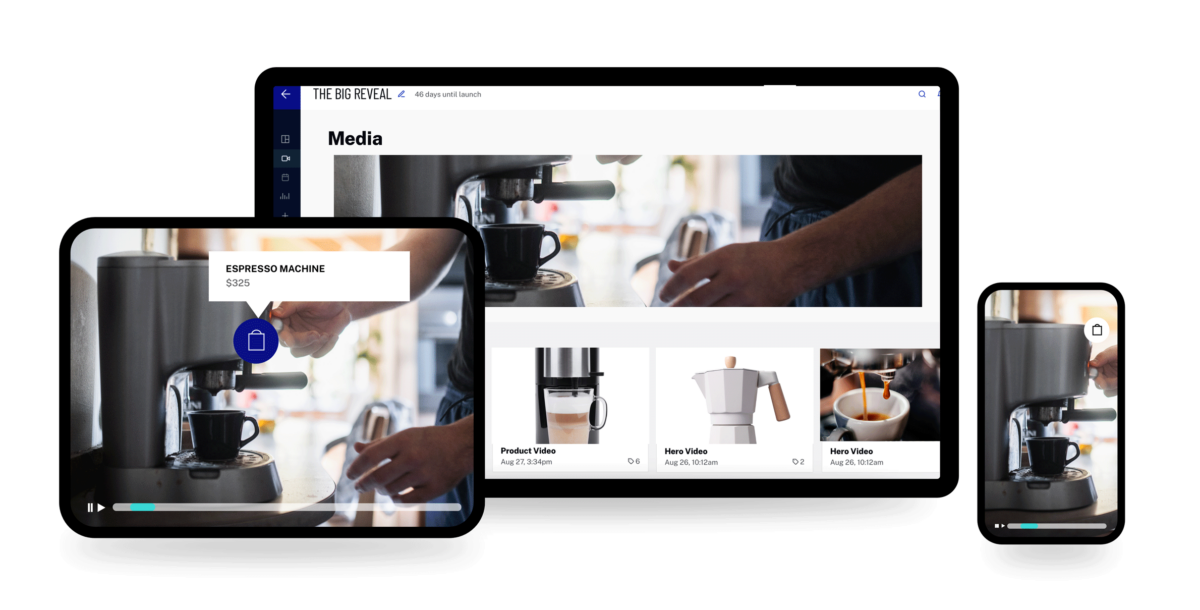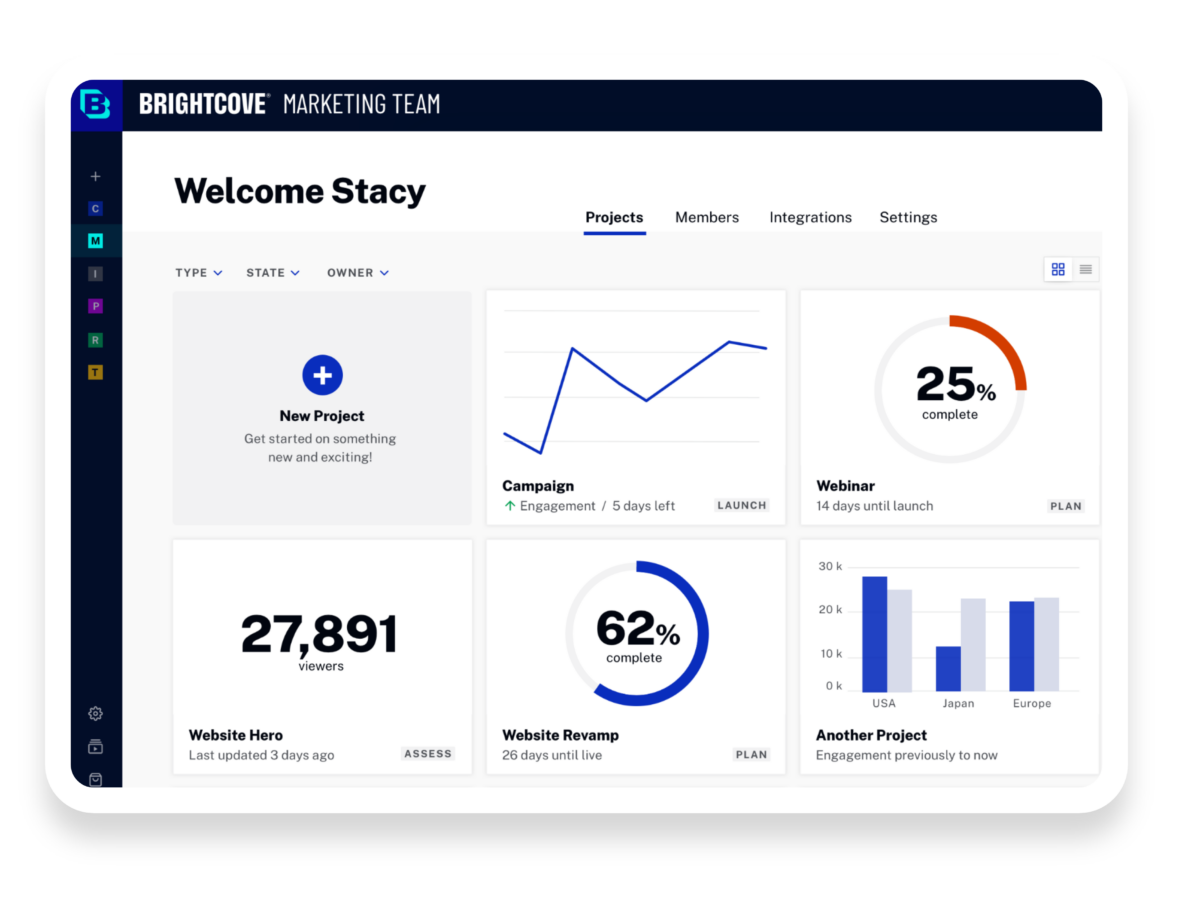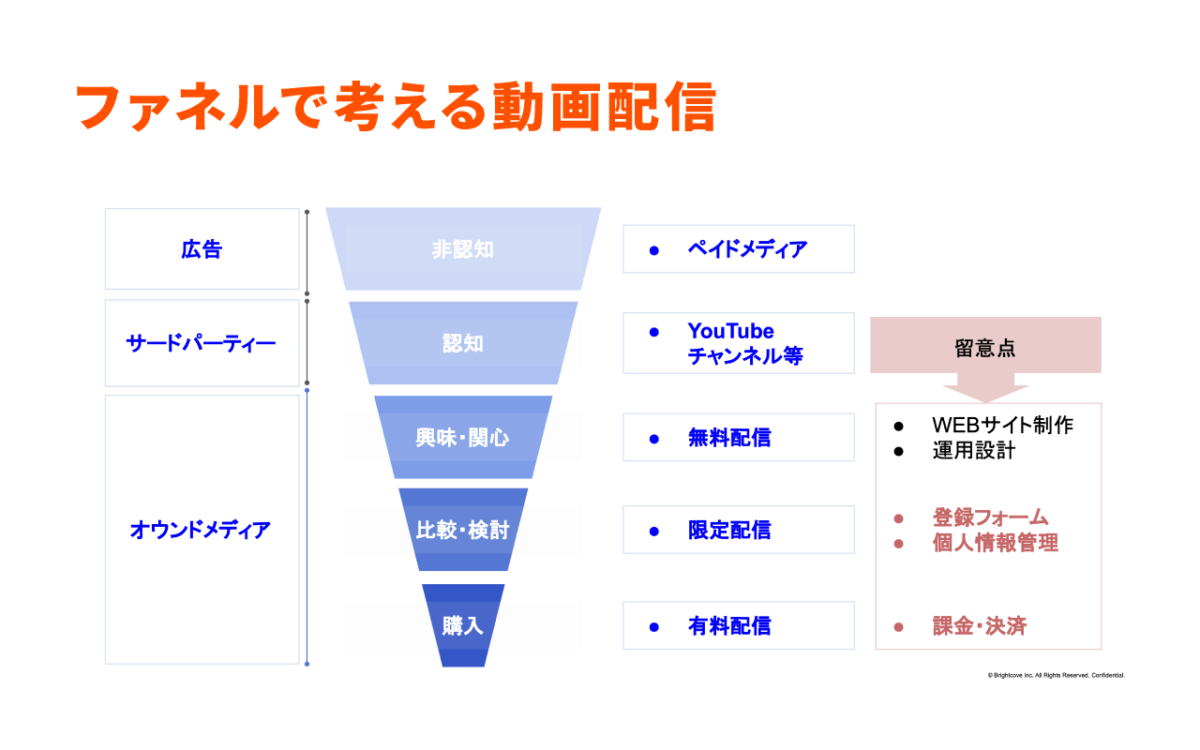Using video content for business is now common practice. The first thing that many people think of when it comes to using video is probably uploading videos to YouTube. YouTube has an overwhelming share of the market worldwide, but it may not be appropriate for use in business. In this article, we will explain the classification of video distribution platforms and how to use them.
## The video market continues to grow
People are watching more videos than ever before. This is probably due to the “stay at home” measures taken during the coronavirus pandemic, the fact that online streaming of events has become established in both the entertainment and business fields, and the spread of 5G telecommunications.
Videos are an effective way to build deep engagement.
It is said that “95% of video viewers remember the message they receive from a video, but only 10% remember when they read it in text”.
There is also research that shows that “websites with videos have 60% longer site dwell time than pages with only text and images”.

Even without bringing up these figures, I think we can all feel in our daily lives the necessity for companies to use video in their business.
## Two types of video distribution platforms
In order to get your video viewed by as many people as possible, you need to upload it to the web. There are various services that can be used for this, but they can be broadly divided into two types: video sharing platforms and company-specific platforms.
A typical example of a video sharing platform is YouTube. Other examples include Nico Nico Douga, TikTok, Facebook, and Twitter.
On these huge platforms, an unspecified number of users upload videos, which are then viewed by an unspecified number of users. The video content is hosted on the server of the website that is using it.
The enterprise-dedicated type is a system that allows each company to use the video distribution functions of the platform, like the service provided by Brightcove, as part of their own proprietary system.

There is no such thing as a better video sharing platform or a better platform for companies to use, but each has its own characteristics.
One of the main features of video sharing platforms is that they are free to use. In most cases, there is no charge for either the person distributing the video or the person watching it.
Another major advantage of video sharing platforms is that they are easy to spread. Platforms have ranking and suggestion functions, so content that becomes popular is spread quickly and is easily viewed by many people.
The downside of video sharing platforms is that they offer little flexibility. In principle, you cannot use them in a way that does not conform to the platform’s regulations.
On the other hand, the advantages and disadvantages of proprietary platforms are the opposite of those of video sharing platforms. They offer a high degree of flexibility and a good support system, but they are paid services.
When using them for personal enjoyment, it is natural to use free video sharing platforms. However, when companies use video in their business, a “high degree of flexibility” is important.
What does “high flexibility” mean? There are three key points.
The first is how you present it.
For example, when you watch a video on YouTube, an advertisement usually plays automatically, but the distributor has no control over what kind of advertisement will play on the viewer’s device. Also, after a YouTube video has finished playing, ‘recommended videos’ are always displayed. There is also the possibility that advertisements or related videos from competitors will play through the video player on your company’s website.
The advantage of a company-exclusive platform is that the company can control and distribute how they want to present the video to the viewer.

The second is security.
When using videos for business purposes, you need to be able to set things like whether only users who have paid for membership can access them, or whether videos cannot be downloaded.
There may also be cases where you want to publish confidential videos for employees or shareholders. With a platform that is exclusive to your company, you can set the scope of publication in detail.

The third is data integration.
When using videos in marketing activities, what is really important is not the number of times the video is played, but “how many pipelines were created through that video”.
It is necessary to obtain viewing data, link it to marketing tools, and take appropriate action in line with viewing trends, or use it for customer analysis.
It is possible to obtain data such as viewer attributes on YouTube and Zoom webinars, but if you want to use more detailed and practical data, a company-specific platform offers more flexibility.

## Thinking about video distribution using funnels
Let’s think about how to use videos using marketing funnels.

Paid media such as TV commercials, train advertisements and taxi advertisements are effective for the non-awareness layer at the top of the funnel.
Video sharing platforms such as YouTube are effective for the awareness layer of “slightly interested/slightly knowledgeable”. There are also an increasing number of consumers who “search on YouTube to find the information they want to know” instead of searching on Google. It is very effective to distribute video content for this type of audience on YouTube and other platforms.
When approaching the bottom of the funnel, it’s time to use a company-specific platform.
By holding events and seminars for potential customers in the comparison and consideration stages via video, you can analyze detailed viewing data. It will also be easier to decide whether it’s best to just send an automated message or whether you should set up an appointment with a sales representative.
In the case of an e-commerce site, you can also expect to see a reduction in the number of people who abandon their shopping carts. If you link to a product description video on YouTube or elsewhere, the viewer’s interest may shift to other content and you may miss the chance to make a sale.

As we have seen so far, there are various methods for using videos.
Videos can accelerate your business. Let’s aim for further business development by choosing a platform that suits each business.




